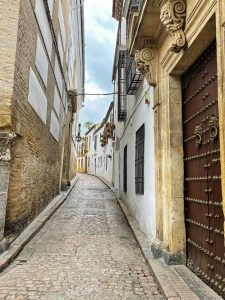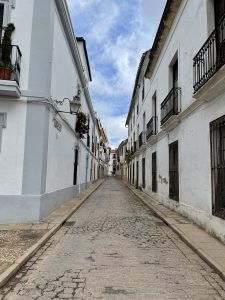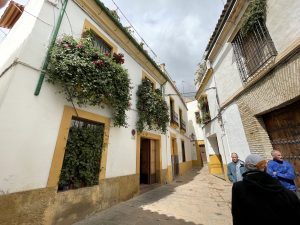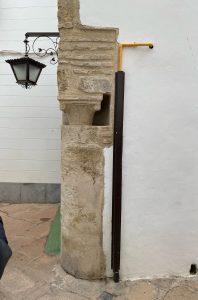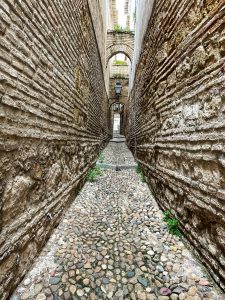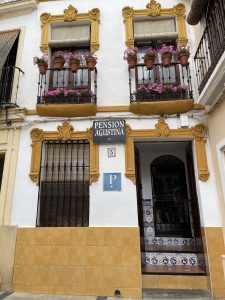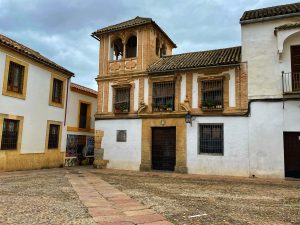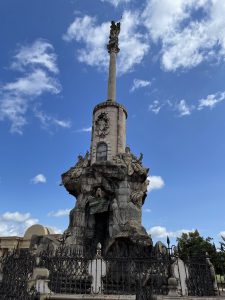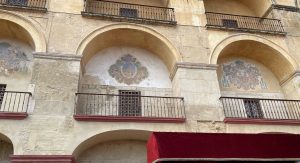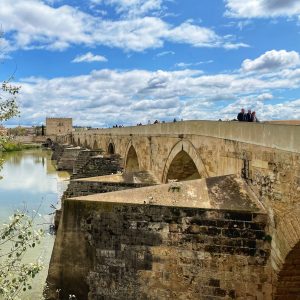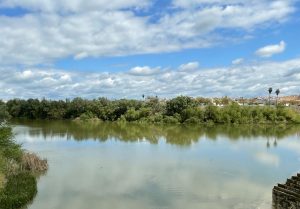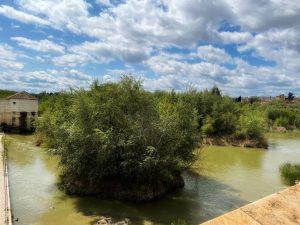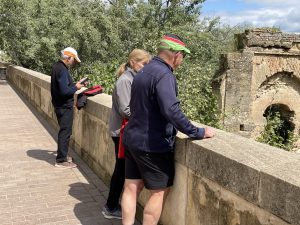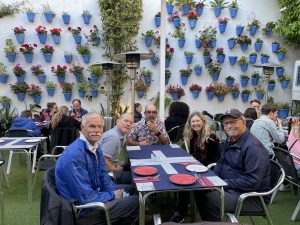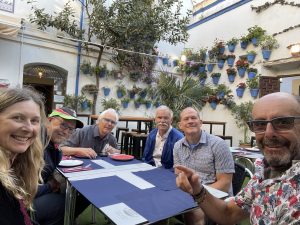|
|
|||
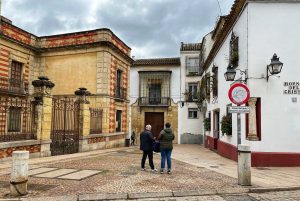
But today’s Córdoba is much more than the Mezquita. Córdoba’s real charms unfold as you explore the winding, stone-paved lanes of the medieval city to the west, north and east of the touristic area immediately around the Mezquita, wandering between wrought-iron balconies and lamps, potted plants, overhanging trees, golden-stone buildings and verdant interior patios, emerging every few minutes on yet another quaint little hidden plaza.

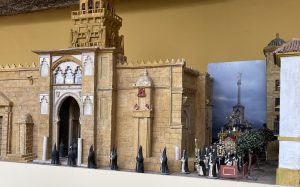
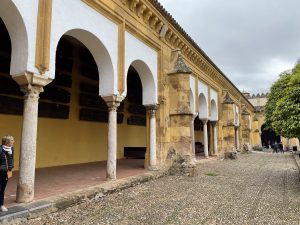
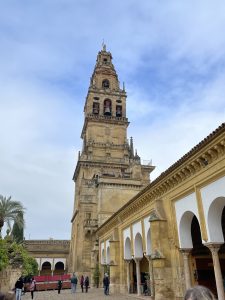
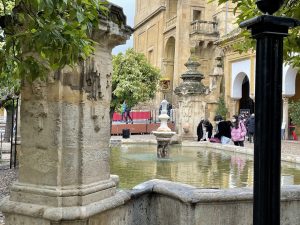
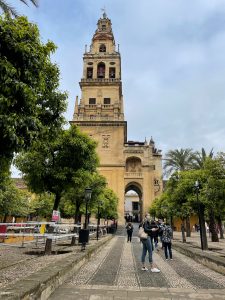 This bell tower replaced the Muslim minaret by the Christians. Above is the courtyard just inside the high walls of the mosque. This mosque is massive, more than the size of 3 Canadian football fields!!
This bell tower replaced the Muslim minaret by the Christians. Above is the courtyard just inside the high walls of the mosque. This mosque is massive, more than the size of 3 Canadian football fields!!
Mosque-Cathedral
Most cities in southern Spain have monuments from their periods under Moorish and – subsequently – Christian rule, but nowhere are they combined in the same structure as they are in Córdoba. The city’s Mosque-Cathedral is the greatest dual-identity monument in Spain and a powerful symbol of the two cultures that have shaped Andalusia. After the Moors captured Córdoba in 711, what had previously been a Visigoth Christian church was split in two and used by both Christians and Muslims as a place of worship. But in 784, on the orders of the Emir Abd al-Rahman, the church was destroyed and work on a great mosque began. Construction lasted for over two centuries and the building was eventually completed in 987, by which point Córdoba was the most important city in the Islamic Kingdom.


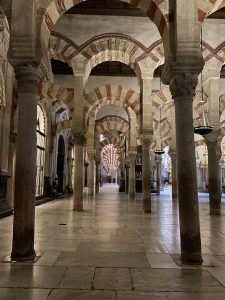
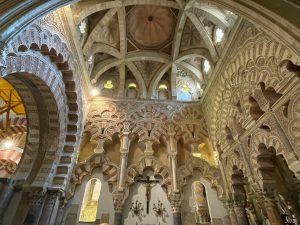
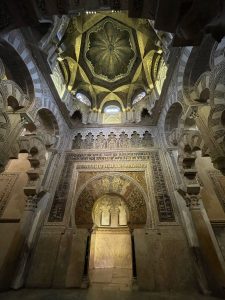
When the city was reclaimed by Christians in 1236, the mosque was converted into a church and in the 16th century Charles V added a great Renaissance nave right on top of the original Moorish structure. The mosque’s most-photographed aspect is its vast main hall, which is supported by over 850 double-arched columns. Sunlight and shadows create unusual effects as you wander among them, contemplating the multifaceted history of this great building.
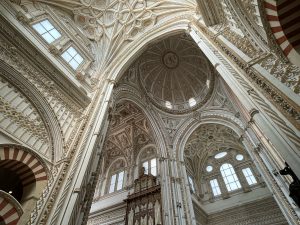
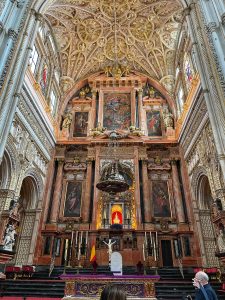
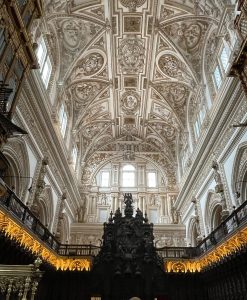

The Church built in the middle of the mosque by the Christians when they took over power in the Iberian peninsula. Somewhat oddly, they did not destroy the original beautiful mosque which was the normal thing to do, but maybe kept it as a trophy to show their power? It is very special to still have these structures survive from the 11th and 12th century
Guadalquivir
Snaking through Córdoba is the Guadalquivir River, the murky green waters of which flow down through Andalusia and its capital Seville before emptying out into the Atlantic. The Guadalquivir played a crucial role in enriching the Spanish Empire in the 16th and 17th centuries, as its river port (the only one in Spain) provided privileged access to the newly discovered Americas. Crossing the river is Cordoba’s famous Roman bridge – a great viewpoint from which to survey the mighty Mosque-Cathedral as well as the distinctively green and hilly landscape that surrounds the city. This verdant countryside is pleasant change from the sun-scorched, mountainous terrain that usually prevails in Andalusia.
Alcazar de los Reyes Cristianos
A visit to the Alcazar de los Reyes Cristianos – “Castle of the Christian Kings”- is a must if you’re in Córdoba. As its name suggests, the construction of this royal palace was ordered by the Catholic King Alfonso XI of Castile in 1328, but – as is so often the case in Andalusia – it was built among the ruins of a vast Moorish fort. In the late 10th century, when the Islamic Kingdom was at the height of its powers, Córdoba was the kingdom’s – and indeed one of the world’s – great intellectual cities, and the Alcazar housed the largest library in the West. Though Alfonso used only a fraction of the remains of the original Moorish structure in building the Alcazar, he chose a Mudejar style, meaning the Moorish feel of the site has been preserved.

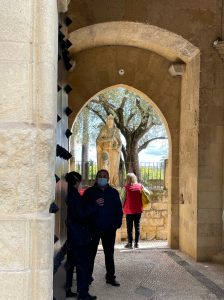
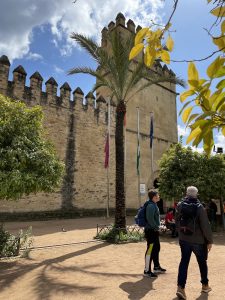
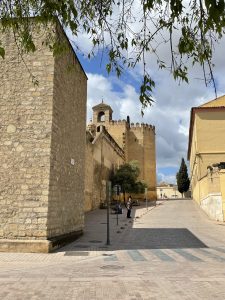
Old Town
Córdoba’s beautiful historic centre is bound by the Guadalquivir River to the south and the Avenida de las Ollerias to the north. Even when compared to the oldest neighbourhoods of other major Andalusian cities, Córdoba’s is conspicuously charming, with its scrunched-together white houses decorated with pots of aromatic jasmine and geraniums. Particularly attractive in this respect is the Calleja de las Flores, a narrow, winding lane lined with what must be some of the prettiest and most colourful houses in southern Spain. Whilst wandering, keep your eyes open for this barrio’s hidden treasures – namely, the private patios and courtyards that are opened to the public every May for the city’s enchanting Feria de los Patios. Juderia, the city’s former Jewish quarter, extends in a tangle of cobbled streets and squares to the north of the Mosque-Cathedral and is also well worth exploring.

